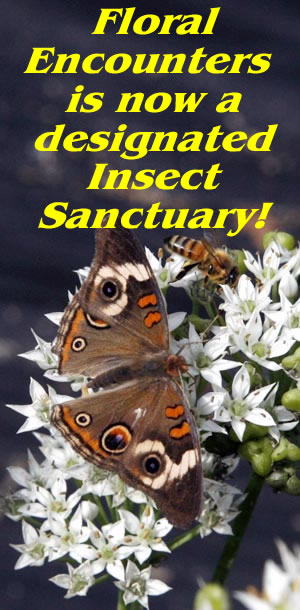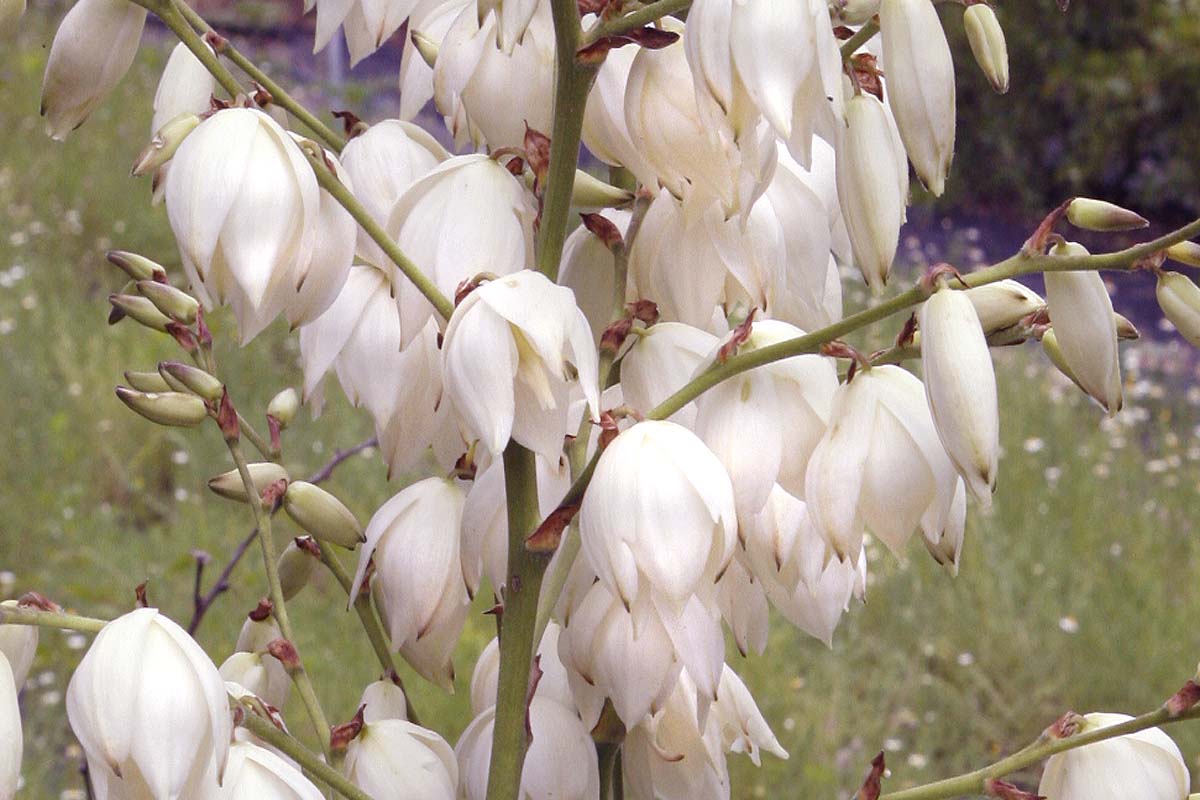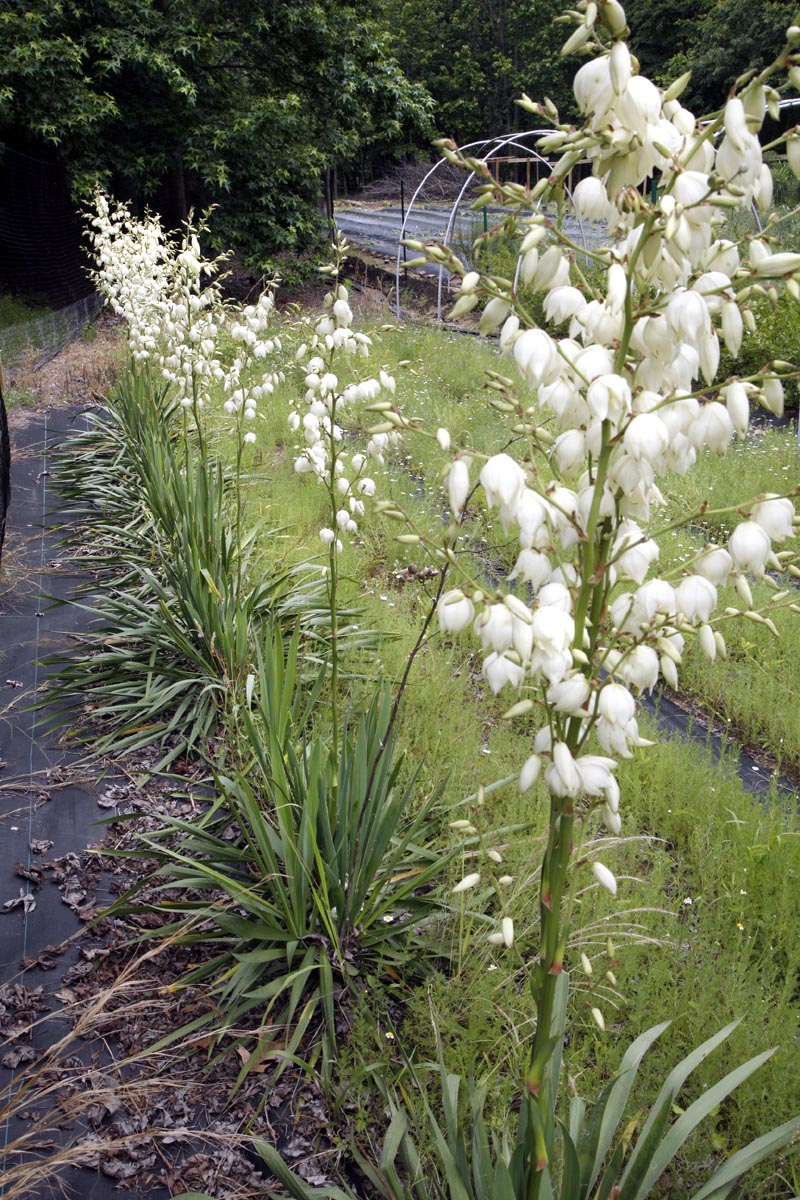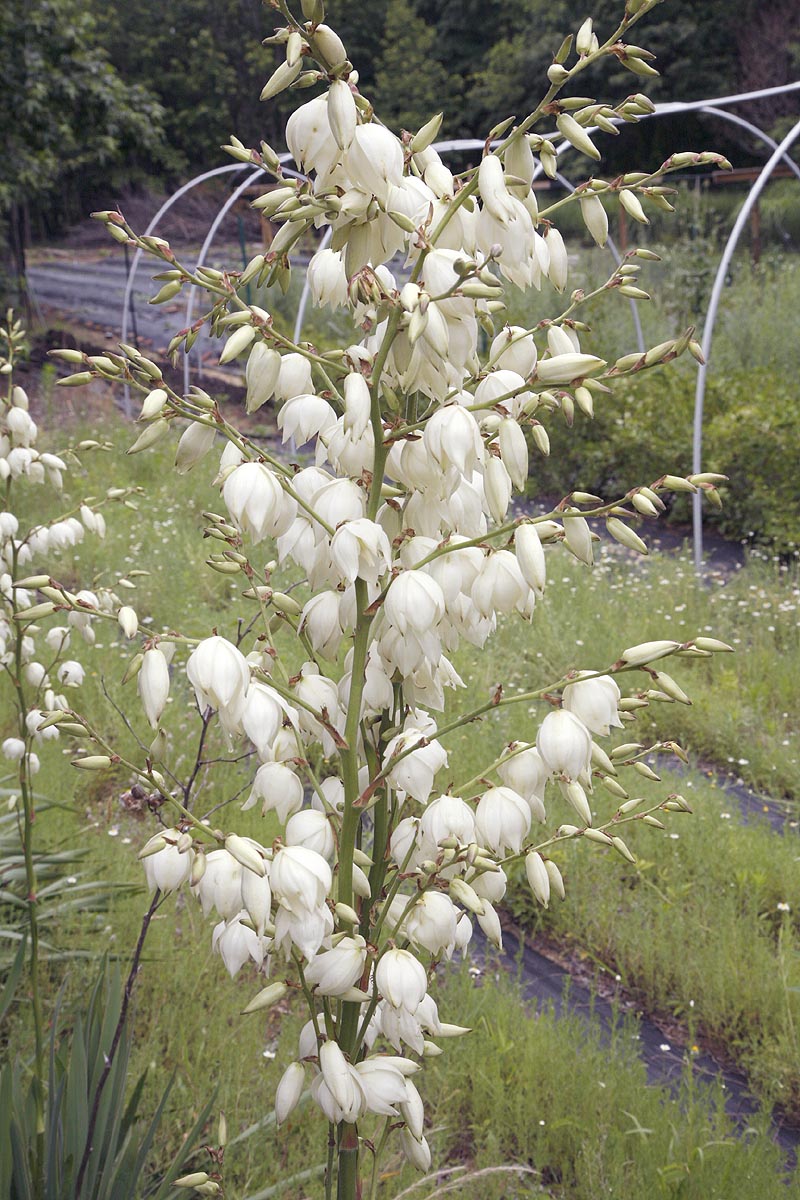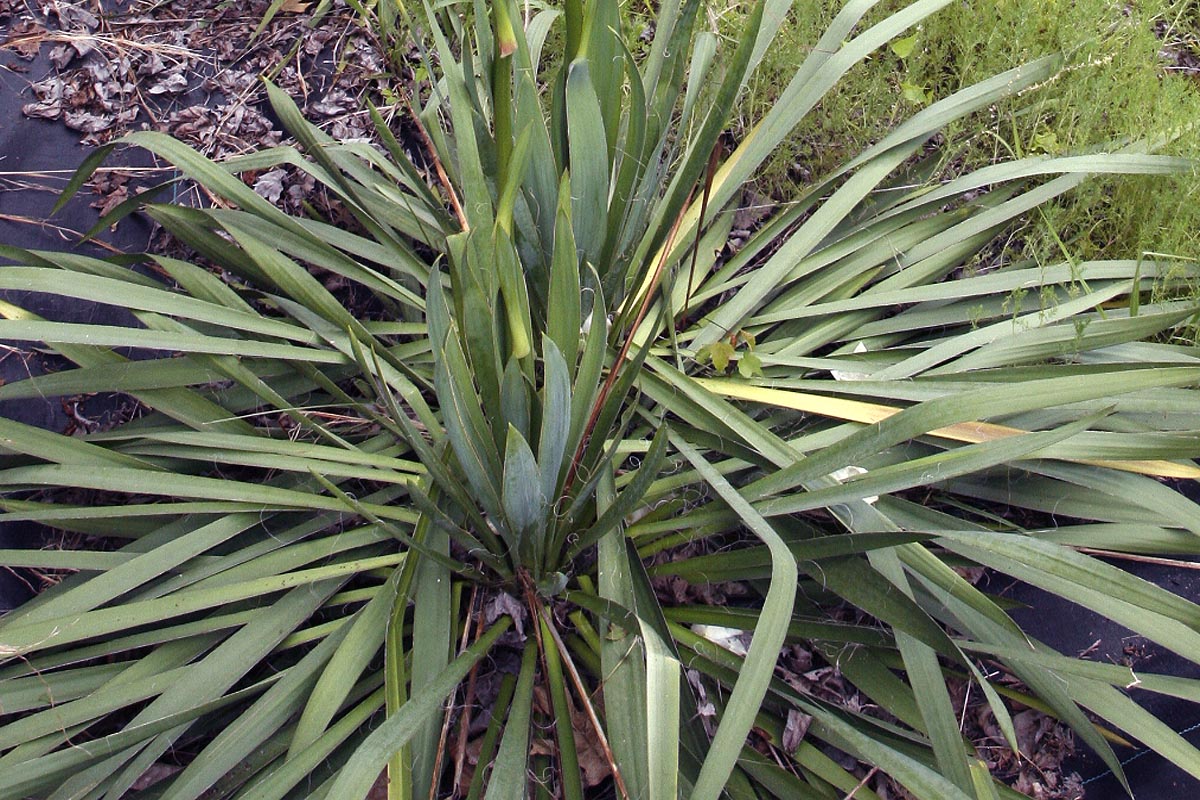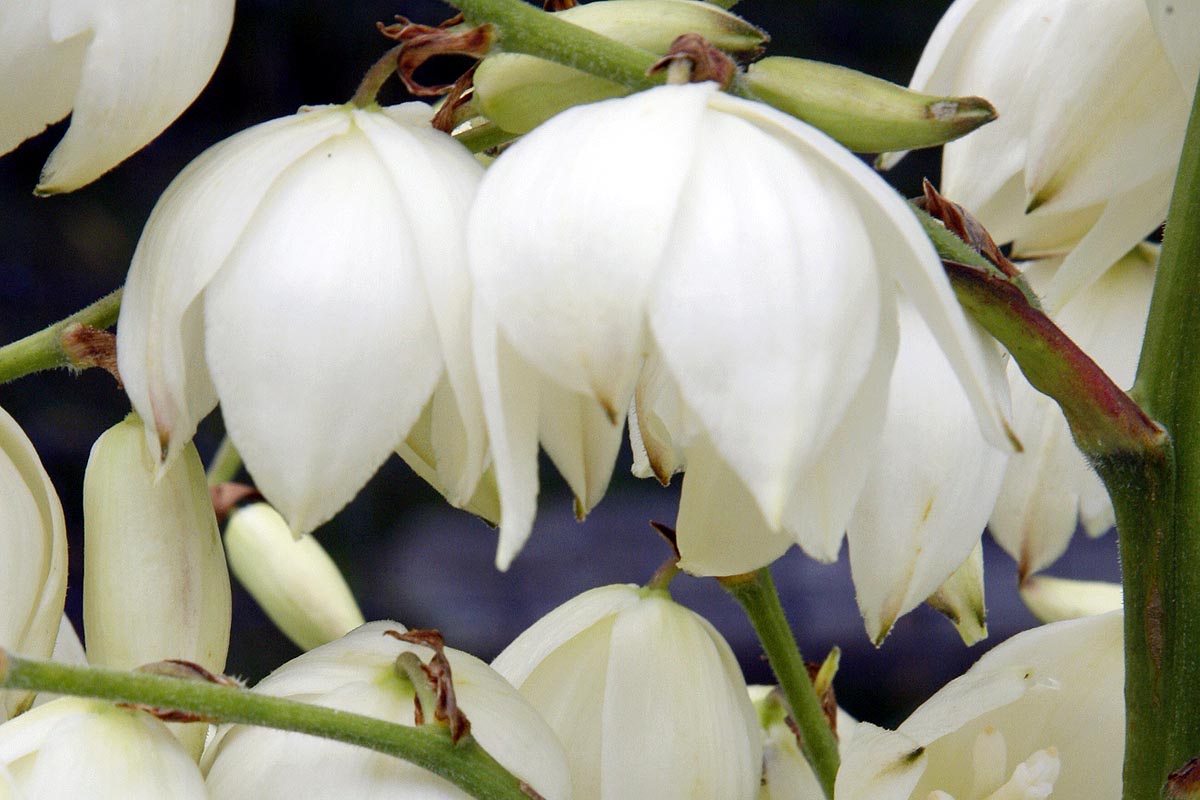Really easy to care for, drought resistant Native American succulent that produces tall spikes of beautiful creamy white aromatic flowers in summer. These spikes can be up to 8 feet (2.4m) tall and contain multitudes of cup shaped flowers. Ideal for all gardens with well drained soil, cant tolerate wet soils at all but will grow on rocky, sandy poor soils and is often used in such places to help with erosion control Hardy to zone 4 maybe more in covered in mulch for the winter. Slow growing to begin it produces large tubers that can be used to make soap but because of these does not like to be moved around once established. The great thing is that once it is in and happy it will produce flower spikes every year, be beautiful and need no more care than cutting down the flower spike at the end of the year. Leaves stay green all through the winter. It needs full sun and plenty of space to grow and be enjoyed. Plant in groups from a real dramatic effect. Easy to grow from seed but will take up to three years before flowering as it needs to establish well first.
Yucca seeds are unpredictable and have a fairly low germination rate so sow many more than the number of plants desired. Sow in small pots or large cell trays so that seedlings can be transplanted without disturbing other ungerminated seeds.
Keep seed mix moist but not wet make sure it drains well and pots are not standing in water. Yuccas need moisture but not wetness. Seeds should be sown no more than 1/4 inch (5mm) deep, barely cover the seeds. Place in bright light.
These seeds need warm temperatures at least 70 F (21C) will be needed to encourage them to grow. They are slow to start and don't grow rapidly until established. The ones we germinate take about 30 days or more before they sprout. We have been averaging about 50% germination on our seeds most years sometimes more.
Once your little seedlings are large enough to handle transplant them to individual pots and grow on in warm light location. Pots can be placed outside once summer arrives place in shade to begin and slowly move to full sun. Make sure the pots don't dry out but stay just moist. Growth rate will depend on many environmental factors so growth could be slow or rapid. In some locations plants may not be large enough to transplant out until early fall/autumn and may even need to be kept in a cold frame or house window during their first winter.
If choosing to direct seed ensure that the location is well protected as tiny yucca plants are tasty to wildlife. We have only been successful growing directly in areas behind wildlife fencing. While plants can also be grown from small root cuttings we have found that our seeded plants grow much larger and stronger than root cutting plants in far fewer years. They also flower much faster.
It may be prudent to winter mulch around plants in zones 4-5 for the first 1-2 years outside until plants are large and strong enough to withstand the winter conditions.
Location and Care of Adam's Needle (Yucca filamentosa).
This plant grows large tuberous roots that help sustain it during drought and cold. It is therefore not too happy at being moved. Choose your location carefully when deciding to plant. While these plants can survive moving they often take up to two years to re-establish before they will flower again. Sometimes longer if more of their roots were removed or damaged.
Light. In zones 4-6b full sun is needed at all times. In warmer zones it can tolerate some light shade to mid shade but this may restrict its flowering. Pick an open location for all plants with good airflow. Yuccas do well on their own where their spiky leaves and tall dramatic flowers make a statement. It also ensures good air circulation around the leaves which is very important in humid locations.
Water. Once established it really does not need any unless there is a really severe drought. It can survive with very little rainfall once established and should not need any extra care.
Soil. It needs to be very well draining and can do well on poor rocky soils and slopes and is sometimes used in low water areas to help with erosion control. These plants do well in sandy well draining soils, they can even grow on almost pure sand or gravel They will grow stronger and larger if the soil contains a little organic material which can hold some moisture and food. They cannot stand very moist and wet soils at all.
Temperature. It can take the heat. Its original range is south eastern United States but its moved north and found it can survive in much colder temperatures. If covered in mulch for the winters it is reported to survive temps of 12 to 1 F (-11 to -17 C).
Weeding. Yuccas can grow pretty large so give them about 2-3 feet (61-91 cm) of space each to grow in so they don't crowd each other. We recommend using some kind of weed prevention around the plants, landscaping fabric, deep mulch, wood chips (not chemicals!) because weeding around these plants is quite difficult with the long spiky leaves. Over time they will expand to cover the ground and beat out most weeds but to begin with they do need some assistance as the weeds grow much faster than they do. Eventually no more weeding is necessary.
Other Care. Cut down the flower spikes every fall/autumn. That's it. Don't need to do anything else. It takes care of itself.
The adult moths emerge just when the yuccas are flowering and live for only four days. In that time they find yucca flowers mate and die. The females will find ripe flowers and actively collect pollen from the flower storing it as a little ball under her chin. She will then fly to a completely different plant and find a new flower in the right condition that has not already been chosen by another female. She will then lay her eggs in the ovary and then deposits the pollen ball on the stigma of the flower before dying.
The flower can then develop seeds which are fed upon by the larva of the moth. They only eat some of the seeds not all of them. Then come autumn/fall they drop to the ground and pupate in the ground. Some will emerge the following year but not all, some will wait in case for some reason the yucca does not flower that year. Some pupa remain for up to four years before emerging to ensure that there are always flowers on the yucca and moths to pollinate them.
The only way to tell if the moth has been to your plant is to look at the seeds. There will be a mixture of good viable seeds and empty husks where the moths have eaten the meat of the seeds.
While some other insects to visit the yucca flowers to obtain pollen these little moths are the only ones that pollinate it. Moths are attracted to ripe flowers by the beautiful intoxicating aroma which rises on the air towards evening and its not as strong or even noticeable in the mornings and early afternoon.
Yuccas do not usually fall prey to pest insects in most locations in the native south eastern states where there is high humidity there may be minor issues with aphids, mealy bugs and scale.
The most destructive is the Yucca weevils (genus Scyphophorus) that burrow underground and feast on the rhizomatous root. These can destroy the whole root of the plant. For the most part they are located in the south eastern united states and across the southern states to California and don't, as yet seem to be in colder zones.
REALLY IMPORTANT NEED TO KNOW BEFORE USING ADAM'S NEEDLE (Yucca filamentosa).
Is it a Yucca or a Yuca? The importance of Latin names vs. common ones.
Yucca (pronounced "yucka") are plants in the Yucca genus of which Adam's Needle (Yucca filamentosa) is one. These are spiky leaved drought resistant desert growing plants with tall flower spikes as described above. They contain saponins and are bitter and the tuberous roots taste pretty bitter and soapy. They are in fact used to make soap and are not really considered edible.
Yuca (pronounced "yoo-ka") is a plant in the genus Manihot know as Manihot esculenta. It is a tropical vegetable with big wide leaves but also a fleshy tuber but this one is delicious to eat and is commonly known as cassava, manioc, and tapioca.
These two plants look nothing alike and have no properties in common except that they both have fleshy roots, one is yummy the other is soap. Unfortunately they have come to have very similar common names with only one 'c' to distinguish between Yucca (soap) and Yuca (yummy). Please take care when researching online as many pages do not bother to check that the information they are providing is not for the plant they are (we hope) talking about. Trying to eat Yucca can be an unpleasant mistake and trying to eat it raw could be dangerous saponins can be poisonous if consumed in quantity. They are mostly made harmless by cooking but raw should be avoided.
Some sources state that flowers can be used in salads, cooked or dried for use as flavouring. The flowers are very aromatic and also contain saponins and while dome report they are bitter others claim they are sweet.
Some also report that the unripe fruits are fleshy and good to eat, but perhaps the consumers don't know about the moth larva chomping away in there.
Other names.
Spanish bayonet, Yucca, Needle Palm, Adam's Needle Yucca, Curlyleaf Yucca, Spoonleaf Yucca


